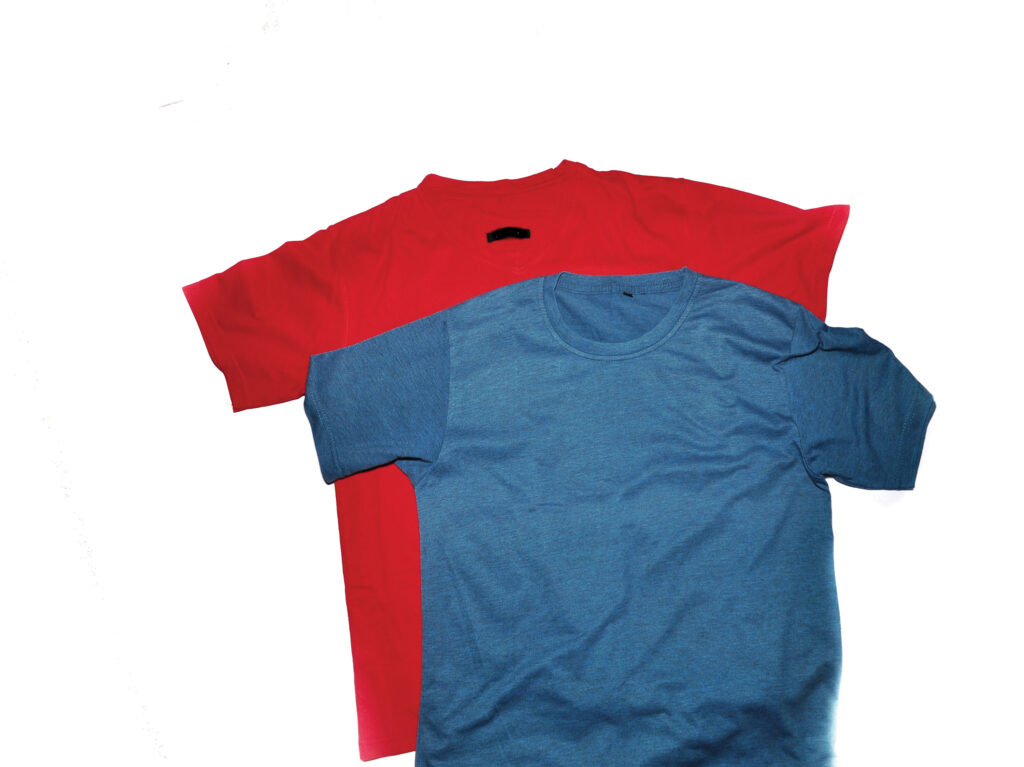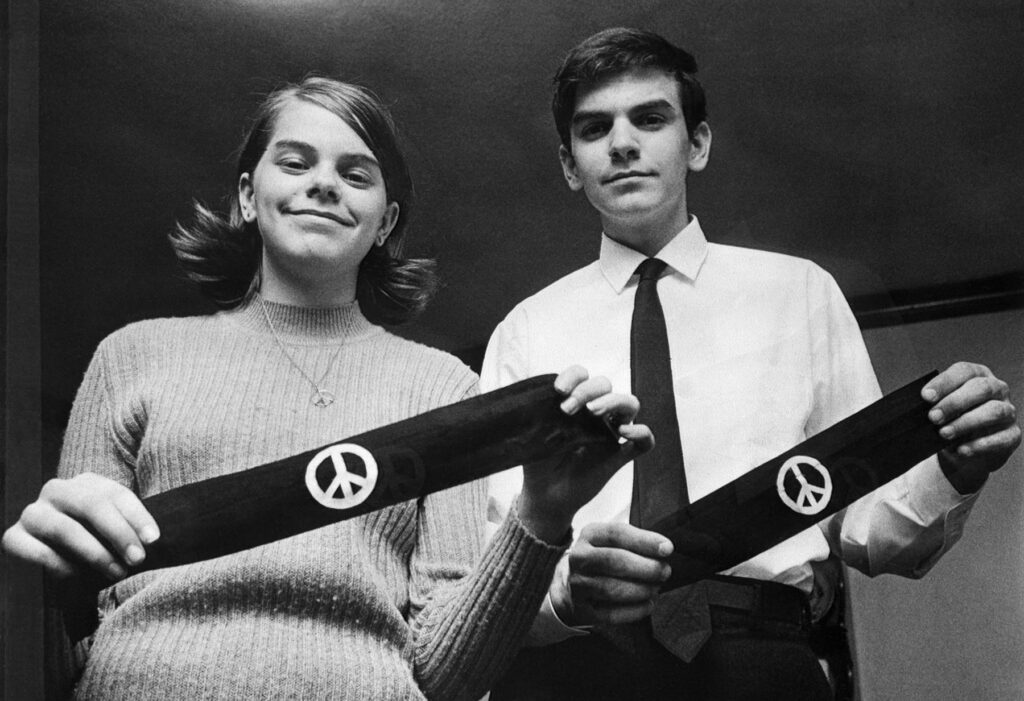Legal Matters: April 2025

Freedom of speech, enshrined in the First Amendment of the Constitution, is a foundational legal principle in the United States. Within the context of schools, the importance of this cultural value has a longstanding history (e.g., Tinker v. Des Moines, 1969). That said, courts have identified instances where the speech rights of students can be restricted (e.g., speech that creates a substantial disruption or promotes illegal drug use). This determination involves a balancing of the school district’s educational mission and the constitutional rights of students. The legal parameters of school district authority are often contextualized, may depend on the history or needs of a given school district, and can vary by jurisdiction.
While speech or expression can come in many forms, one ongoing venue where students assert or express their beliefs and identities is through their clothing, including T-shirts conveying particular messages. In practice, school leaders are faced with the task of determining which messages they have the authority to prohibit and which ones they must permit to comply with the First Amendment. Notably, many cases seek to delineate the bounds of school district authority to prohibit particular messages. A recent case illustrates this phenomenon. The case involved a student who was told he couldn’t wear a T-shirt that read: “There are only two genders.”
In this article, we provide a foundation for understanding the First Amendment in schools. Then, we present the contemporary T-shirt case mentioned above, followed by a section that situates
this case within broader cases involving T-shirts and the First Amendment. Finally, we end with implications and conclusions.
Tinker v. Des Moines
In 1969, Tinker v. Des Moines marked a pivotal moment for student rights in American schools. In this case, school officials prohibited students from wearing armbands as a symbol of mourning and to advocate for a truce during the Vietnam War. The school learned of their intentions and banned the wearing of the armbands. The U.S Supreme Court ruled that students have a right to this form of protest as long as the action does not create a “substantial disruption of or material interference with school activities” or “collide with the rights of others.” As the cases below demonstrate, the Tinker ruling remains an influential precedent and continues to impact nationwide discussions on students’ rights and freedom of speech.

Recent First Circuit Court Case
A recent Massachusetts case involved a seventh grader, Liam Morrison, who was told he could not wear a T-shirt that read: “There Are Only Two Genders” (L.M. v. Town of Middleborough, 2024). A month later, Morrison came to school wearing the same shirt, with the words “Only Two” covered by tape that was labeled “Censored.” Administrators prohibited Morrison from wearing the shirt because from their perspective, the message still constituted a violation of the school district dress code, which stated:
“Clothing must not state, imply, or depict hate speech or imagery that target[s] groups based on race, ethnicity, gender, sexual orientation, gender identity, religious affiliation, or any other classification…”
It is worth noting that Morrison was permitted to wear T-shirts with messages such as “First Amendment Rights” and “Don’t Tread on Me.”
Morrison’s parents filed a lawsuit alleging a violation of his First Amendment rights. The district court judge upheld the school district’s decision based on the prong of the Tinker test that relates to “invasion of the rights of others.” The court of appeals agreed with the district court ruling but instead relied on the substantial disruption prong of the Tinker test, finding that “the record supports as reasonable an assessment that the message in this school context would so negatively affect the psychology of young students with the demeaned gender identities that it would ‘poison the educational atmosphere.’” This ruling could influence future cases by reinforcing schools’ authority to limit student expression that could harm the educational climate.
Related Cases
Historically, courts have addressed a wide range of cases involving T-shirts. These cases include those involving affirming or dismissive statements regarding marginalized students, messages associated with particular flags, and political statements. Here, we will discuss some examples to illustrate the breadth and depth of the “T-shirt wars.”
There are a few court cases that directly involve T-shirts with pro or anti-LGBTQ messages. For example, Harper v. Poway (2006) involved a student in California who wore a shirt that read: “Be Ashamed, Our School has Embraced What God has Condemned” on the front and “Homosexuality is Shameful” on the back. Drawing on Tinker, the court found that, “Harper’s wearing of his T-shirt ‘colli[des] with the rights of other students’ in the most fundamental way. Public school students who may be injured by verbal assaults on the basis of a core identifying characteristic such as race, religion, or sexual orientation, have a right to be free from such attacks while on school campuses” (p. 1178). It is worth noting that a court in a different jurisdiction (Illinois) reached the opposite conclusion based on a somewhat similar set of facts (Zamecnik v. Indian Prairie School District No. 204, 2011).
On the topic of LGBTQ issues, there have also been cases involving affirming and supportive messages. For example, one student in Tennessee wore a shirt that said: “Some people are gay, get over it,” a message in contrast to the school district’s ban on pro-LGBTQ clothing. Following a decision in favor of the plaintiff, the school district settled the lawsuit (Balakit, 2016).
Courts have also been asked to address cases involving T-shirts with different types of flags on them. For example, in one case, Dariano v. Morgan Hill Unified School District (2014), multiple students in California wore American flag T-shirts on Cinco de Mayo and the principal told the students they needed to turn their shirts inside out. The school district had a history of racial harassment and violence and therefore, the court upheld the school district’s actions. Another case, Hardwick v. Heyward (2013), involved a student in South Carolina who wore shirts with confederate flags on multiple occasions. According to the court, “multiple incidents of racial tension in [the district] and the potential for such vastly different views among students about the meaning of the Confederate flag provide a sufficient basis to justify the school officials’ conclusion that the Confederate flag shirts would cause a substantial disruption.” To support its decision, the court cited many other court cases that similarly relied on past racial tensions, harassment, or violence to justify prohibitions on Confederate flags.
Conclusion
Given the power of clothing to communicate messages, beliefs, opinions, and identities, it’s likely that court cases involving T-shirts will remain a part of the broader education law landscape. In light of the current sociopolitical context, where communities are divided, we may even see an increase in these issues in school districts nationally. As such, it is important for educational leaders to be familiar with the legal frameworks that courts apply in their jurisdiction and to understand that factual distinctions or contextual differences are critical to consider as a part of the legal analysis.
Maria M. Lewis, JD, PhD, is an associate professor of education at Pennsylvania State University. She teaches courses on education law and leadership for equity, diversity, and inclusion. Kara Mancini is a seventh grade math teacher at Steelton-Highspire Jr./Sr. High School in Steelton, PA.
References
Balakit, M. (2016, August 16). ACLU settles lawsuit over Tennessee student’s pro-LGBT shirt. The Tennessean. tennessean.com/story/news/education/2016/08/16/aclu-settles-lawsuit-over-tennessee-students-pro-lgbt-shirt/88870474/
Dariano v. Morgan Hill Unified School District, 767 F.3d 764 (9th Cir. 2014).
Hardwick v. Heyward, 711 F. 3d 426 (4th Cir. 2013).
Harper v. Poway, 445 F.3d 1166 (9th Cir. 2006).
L.M. v. Town of Middleborough, 103 F.4th 854 (1st Cir. 2024).
Tinker v. Des Moines, 393 U.S. 503 (1969).
Zamecnik v. Indiana Prairie School District No. 204, 636 F. 3d 874 (7th Cir. 2011).
